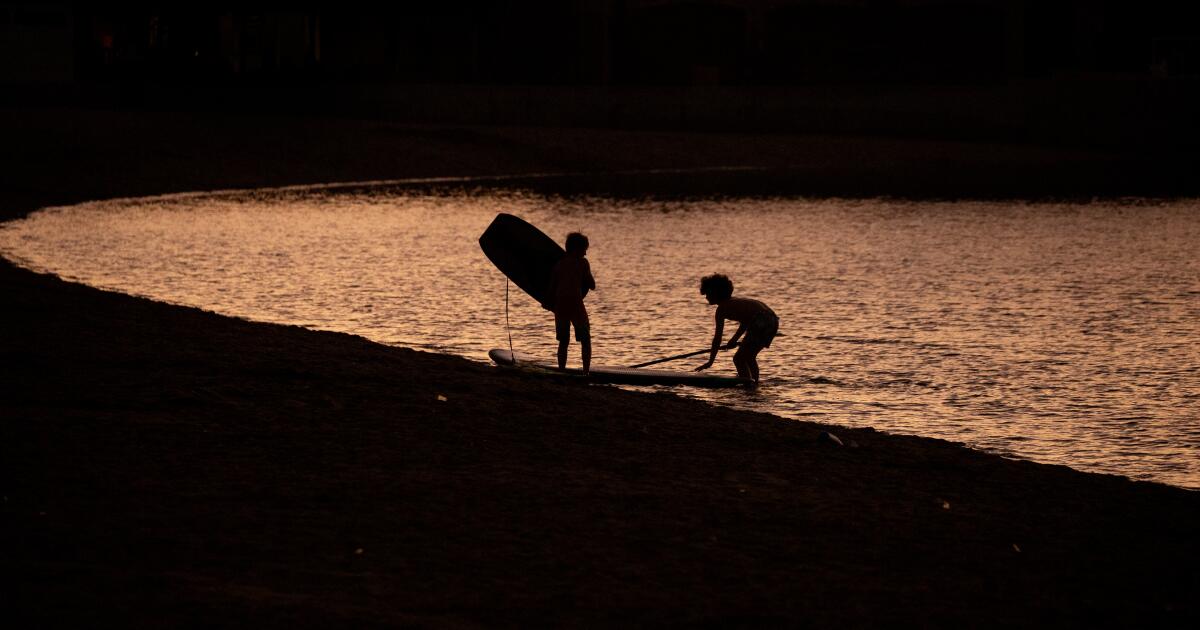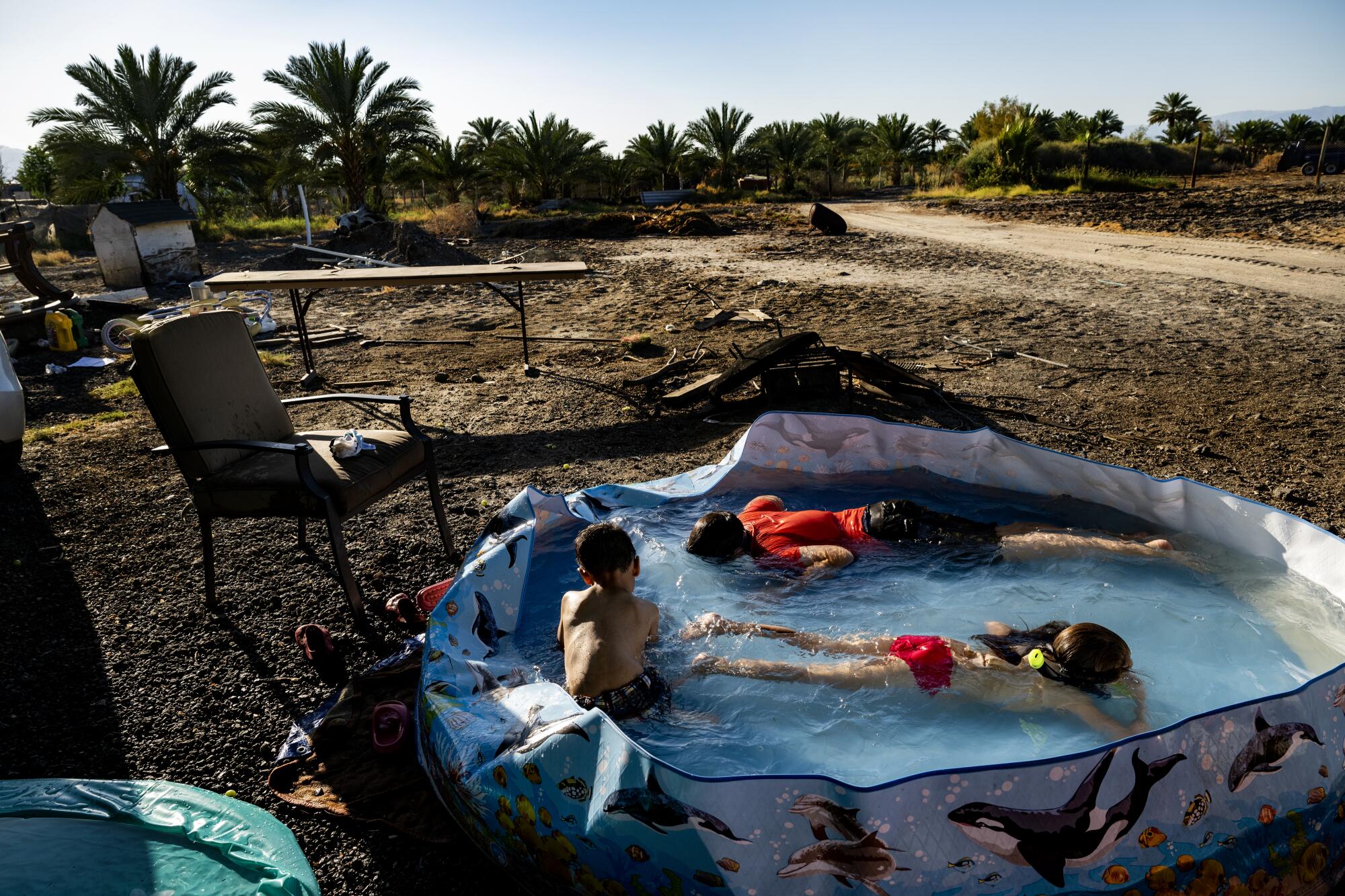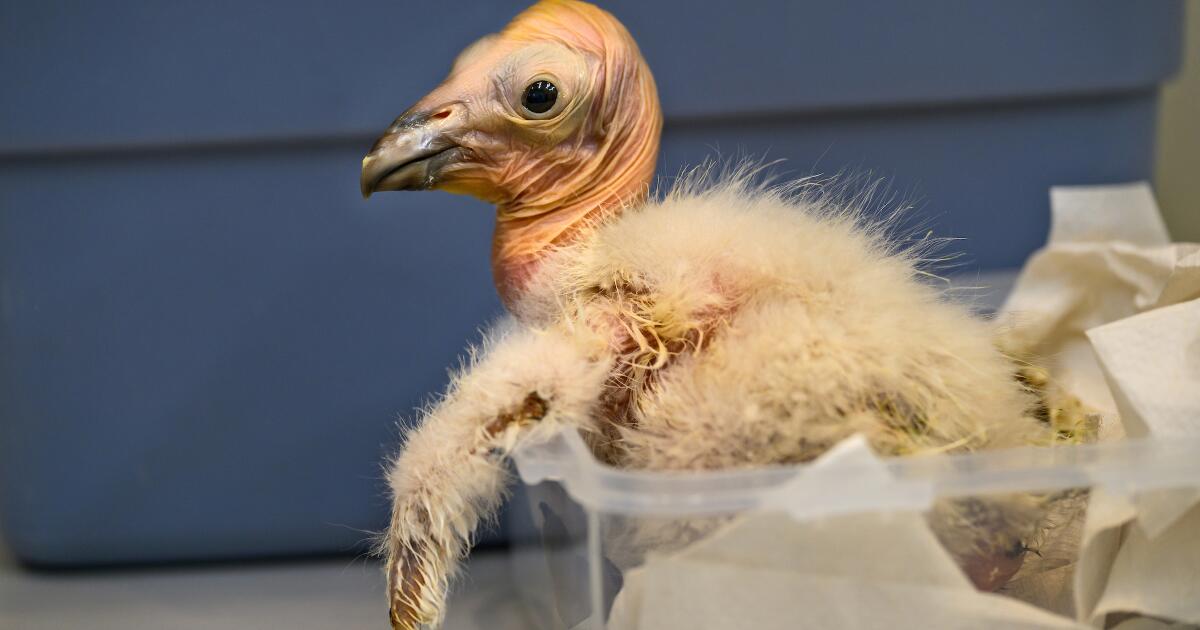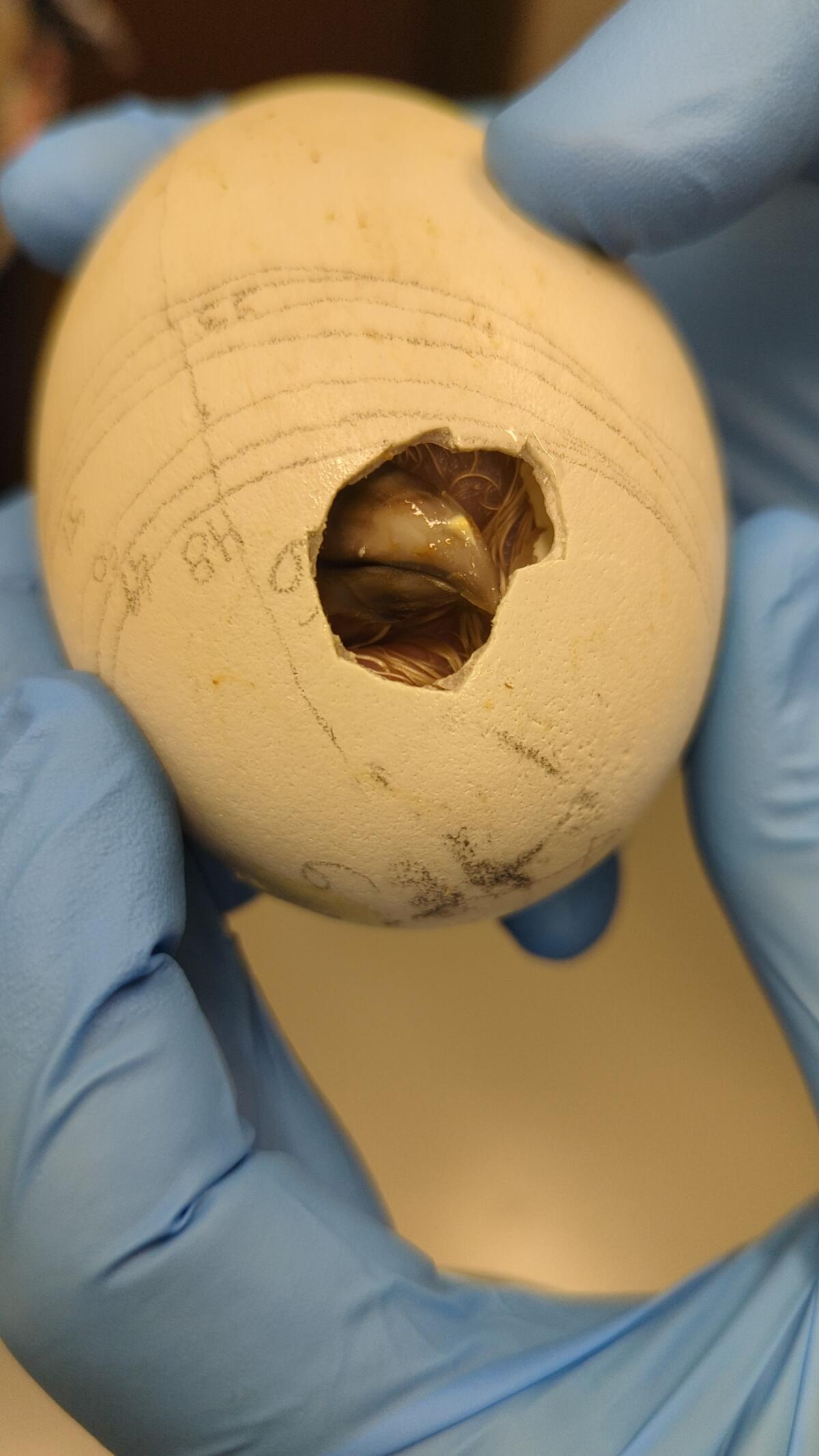Science
Extreme heat and weather threaten health at nearly every stage of life, WHO says

As the planet continues its streak of record-breaking heat, the World Health Organization has issued urgent new warnings about the ways in which climate change is affecting the most vulnerable members of society at almost every stage of life.
Pregnant people, newborns, children, adolescents and seniors are all facing serious health complications from global warming, yet the needs of each group have been largely neglected, researchers argue in a series of papers published recently in the Journal of Global Health.
“These studies show clearly that climate change is not a distant health threat, and that certain populations are already paying a high price,” read a statement from Anshu Banerjee, the WHO’s director of maternal, newborn, child and adolescent health and aging. “While awareness of climate change has increased, actions to safeguard the lives of those at most risk has barely scratched the surface of what’s needed. For climate justice to be achieved, this must be urgently redressed.”
Aggressive and impactful reporting on climate change, the environment, health and science.
Among the studies is a review of the effects of climate change and air pollution on maternal and newborn health, which found links between exposure to heat and pollutants and adverse birth outcomes — particularly preterm birth. The analysis found evidence of a 16% increase in the odds of preterm birth during heat waves compared with non-heat-wave days, as well as an average increase in the odds of preterm birth for each degree of warming.
In 2019, 35.7% of global preterm births were attributable to particulate matter exposure — the equivalent of 5,870,103 newborns, the review says. Air pollution also appeared to be linked to congenital anomalies.
In fact, high temperatures and ambient air pollution were associated with a number of issues, including gestational diabetes and other hypertensive pregnancy disorders, miscarriage, stillbirth and increased risk of hospitalization for newborns and infants, among others. Lower birth weights were more commonly observed in warmer months of the year after exposure to a heat wave.
While all people are exposed to climate change, those pregnant, infants and children are particularly susceptible to such hazards in part because of a set of “physiological, clinical, behavioral, and social factors that characterize these unique stages of life,” the study says.
For example, pregnancy increases vulnerability to vector-borne diseases, while infants and children are prone due to their immature immune systems and impaired ability to regulate body temperature. Women and children are also often at greater risk in the aftermath of disasters, particularly when access to care is disrupted.
“It is time for policy action and financing to consider the specific needs of [maternal and newborn health] in climate change hazards,” the study says.
But pregnancy and birth aren’t the only stages of life affected by climate change.
Another study in the package found consistent evidence that climate-related hazards and events are associated with greater negative outcomes for children and adolescents — including increases in post-traumatic stress and other mental health disorders; increases in asthma, respiratory illnesses and vector-borne diseases; increases in malnutrition and reduced growth; and disruptions to caregiving and family functioning.
“The world’s changing climate affects the fundamental rights of children to survive, thrive and reach their full potential,” the paper says. “Exposure to climate change-related events during childhood can have long-lasting effects throughout the lifetime.”

Sofia Gonzalez, who is nine months pregnant, cools off in her backyard in April 2020.
(Wally Skalij / Los Angeles Times)
In fact, the United Nations Children’s Fund, or UNICEF, has found that half the world’s children are at an extremely high risk of climate change effects due to exposure to multiple hazards, as well as a lack of access to essential health and other services to help mitigate and recover from climate-related events. More than a third of people displaced internationally in 2022 due to climate change were children.
The WHO review focused primarily on extreme weather-related disasters and rising temperatures. It found a wide range of PTSD outcomes for children and adolescents in the wake of such disasters, as well as elevated rates of phobias, sleep disruption, attachment disorders, depression, panic and anxiety.
It also looked at the growing trend of eco-anxiety — or grief, stress, fear, anger and other emotions that arise in response to an awareness of climate change. Though it found some associations, it concluded that there remains a relative lack of data on the prevalence and severity of those mental health effects, and urged more research into the matter.
“Much remains unknown about the causal pathways linking climate-change-related events and mental and physical health, responsive relationships and connectedness, nutrition, and learning in children and adolescents,” review authors wrote. “This evidence is urgently needed so that adverse health and other impacts from climate change can be prevented or minimized through well-timed and appropriate action.”
The review also uncovered the ways in which families can be disrupted by climate change, including ripple effects on children and teens. Added stressors on parents and caregivers can affect their ability to provide care, while climate disasters can also compromise social support structures such as religious organizations and community groups.
In one example, low-income mothers in the New Orleans area were found to have higher levels of depressed moods after Hurricane Katrina, which was linked to less effective parenting, the study says.
“These findings suggest that responsive caregiving, connectedness and caregiver mental health are central factors in child health and well-being outcomes post-disaster.”
Seniors also can’t escape the threats of climate change, as a third assessment found that global warming is directly affecting older people’s longevity and healthy aging. Extreme temperatures, wildfire, drought, flooding, storms, sea level rise, air quality issues, infectious diseases, food and water insecurities, migration, relocation, and health and social care system displacement are all pathways to such effects.
For instance, an assessment of floods across 761 global communities found higher mortality risks in areas with larger proportions of older people. Meanwhile, 71% of fatalities during Hurricane Katrina were older people, despite seniors representing only 15% of the population.
Similarly skewed numbers have also been observed in California. All four people who died in 2022’s McKinney fire were over age 70. The majority of the 85 people who died in the 2018 Camp fire were older than 65. The study notes that older people may need more time to evacuate, more support in the case of power shortages and may be more vulnerable to particulate matter from wildfire smoke.

Youngsters cool off in the 115-degree heat in the early evening outside their trailer in Thermal, Calif., in July 2023.
(Gina Ferazzi / Los Angeles Times)
As in the case of children, older people also have a harder time regulating their body temperature and recognizing temperature changes, and so are particularly vulnerable to extreme heat, which is getting worse due to climate change. Not only does extreme heat expose this group to greater risks of heart failure, heatstroke, dehydration, kidney and renal issues and worsened respiratory health, but it can also exacerbate preexisting medical conditions such as cardiovascular disease, diabetes and asthma, the study says.
“Despite this, as a group, older persons have often been neglected in studies on the impact of climate change. This is a major oversight for older persons living in all regions and countries,” the study authors wrote, noting that the proportion of older people is increasing globally, with 1 in every 6 people projected to be 60 or older by 2030.
“There is a crucial need to harmonize the concerns of older individuals and environmental sustainability to safeguard the rights of older people, particularly given the escalating impacts of the climate change crisis,” it says.
The WHO’s findings come as international climate officials issue urgent warnings that humanity is moving in the wrong direction. May marked the 12th consecutive month of record-breaking global temperatures, and yet planet-warming carbon dioxide emissions continue to climb.
“Like the meteor that wiped out the dinosaurs, we are having an outsized impact,” United Nations Secretary-General António Guterres said during a speech Wednesday. “In the case of climate, we are not the dinosaurs — we are the meteor. We are not only in danger — we are the danger. But we are also the solution.”
Indeed, a fourth report from the WHO concludes that comprehensive action is needed.
“The effects of climate change can either be exacerbated by existing inequalities and the interaction with other crises or be mitigated through good governance, which draws on collective intelligence for the common good, evidence-based policies, the engagement of people, and the involvement of all sectors,” the report says.
The report outlines opportunities for adaptation, including infrastructure upgrades, expanded workforce capacities and the need to address the root sources of planet-warming emissions.
At the same time, the health agency warned that frameworks for maternal care and child care, as well as elder care, have received minimum attention and must be taken into account.
“A healthy environment underpins health throughout life, enabling healthy growth and development in childhood and adolescence, healthy pregnancies and healthy aging,” read a statement from WHO scientist Anayda Portela. “There is an urgent need to mitigate climate change by reducing greenhouse gas emissions and to build climate resilience; to take specific actions that protect health at these various life stages, and to ensure continuity of health services for those most at risk when climate disasters occur.”

Science
Q&A: Learn how Olympians keep their cool from Team USA's chief sports psychologist

Your morning jog or weekly basketball game may not take place on an Olympic stage, but you can use Team USA’s techniques to get the most out of your exercise routine.
It’s not all about strength and speed. Mental fitness can be just as important as physical fitness.
That’s why the U.S. Olympic & Paralympic Committee created a psychological services squad to support the mental health and mental performance of athletes representing the Stars and Stripes.
“I think happy, healthy athletes are going to perform at their best, so that’s what we’re striving for,” said Jessica Bartley, senior director of the 15-member unit.
Bartley studied sports psychology and mental health after an injury ended her soccer career. She joined the USOPC in 2020 and is now in Paris with Team USA’s 592 competitors, who range in age from 16 to 59.
Bartley spoke with The Times about how her crew keeps Olympic athletes in top psychological shape, and what the rest of us can learn from them. Her comments have been edited for length and clarity.
Why is exercise good for mental health?
It gets you moving. It gets the endorphins going. And there’s often a lot of social aspects that are really helpful.
There are a number of sports that stretch your brain in ways that can be really, really valuable. You’re thinking about hand-eye coordination, or you’re thinking about strategy. It can improve memory, concentration, even critical thinking.
What’s the best way to get in the zone when it’s time to compete?
When I work with athletes, I like to understand what their zone is. If a 0 or a 1 is you’re totally chilled out and a 10 is you’re jumping around, where do you need to be? What’s your number?
People will say, “I’m at a 10 and I need to be at an 8 or a 7.” So we’ll talk about ways of bringing it down, whether it’s taking a deep breath, listening to relaxing music, or talking to your coach. Or there’s times when people say they need to be more amped up. That’s when you see somebody hitting their chest, or jumping up and down.
If you make a mistake in the middle of a competition, how do you move on instead of dwelling on it?
I often teach athletes a reset routine. I played goalie, so I had a lot of time to think after getting scored on. I would undo my goalie gloves and put them back on, which to me was a reset. I would also wear an extra hairband on my wrist, and when I would snap it, that meant I needed to get out of my head.
It’s not just a physical reset — it helps with a mental reset. If you do the same thing every single time, it goes through the same neural pathway to where it’s going to reset the brain. That can be really impactful.
Do Olympic athletes have to deal with burnout?
Oh, yeah. Everybody has a day where they don’t want to do whatever it is. That’s when you have to ask, “What’s in my best interests? Do I need a recovery day, or do I really need to get in the pool, or get in the gym?”
Sometimes you really do need what we like to refer to as a mental health day.
How can you psych yourself up for a workout when you just aren’t feeling it?
It’s really helpful to think about why you’re doing this and why you’re pushing yourself. Do you have goals related to an activity or sport? Is there something tied to values around hard work or discipline, loyalty or dependability?
When you don’t want to get in the gym, when you don’t want to go for a run, think about something bigger. Tie it back to values.
Is sleep important for maintaining mental health?
Yes! We started doing mental health screens with athletes before the Tokyo Games. We asked about depression, anxiety, disordered eating and body image, drugs and alcohol, and sleep. Sleep was actually our No. 1 issue. It’s been a huge initiative for us.
How much sleep should we be getting?
It’s different for everyone, but generally we know seven to nine hours of sleep is good. Sometimes some of these athletes need 10 hours.
I highly recommend as much sleep as you need. If you didn’t get enough sleep, napping can be really valuable.
Is napping just for Olympic athletes or is it good for everybody?
Everybody! Naps are amazing.
What if there’s no time for a nap?
There are different ways of recharging. Naps could be one of them, but maybe you just need to get off your feet for 20 minutes. Maybe you need to do a meditation or mindfulness exercise and just close your eyes for five minutes.
How do you minimize the effects of jet lag?
We try to shift one hour per day. That’s the standard way of doing it. If you can, it’s super helpful. But it’s not always possible.
The thing we tell athletes is that our bodies are incredible, and you will even things out if you can get back on schedule. One or two nights of crummy sleep is not going to impact your overall performance.
What advice do you give athletes who have trouble falling asleep the night before a competition?
You don’t want to change much right before a competition, so I usually direct athletes to do what they would normally do.
Do you need to unwind by reading a book? Do you need to talk on the phone with somebody and get your mind off things? Can you put your mind in a really restful place and think about things that are really relaxing?
Are there any mindfulness or meditation exercises that you find helpful?
There are some athletes who benefit greatly from an hourlong meditation. I love something quick, something to reset my brain, maybe close my eyes for a minute.
If I’m feeling like I need to take a moment, I love mindful eating. You savor a bite and go, “Oh, my gosh, I have not been fully engaged with my senses today.” Or you could take a mindful walk and take in the sights, the smells, all of the things that are around you.
What do you eat when you need a quick nutrition boost?
Cashews. I tend to carry those with me. They’ve got enough energy to make sure I keep going, physically.
I’ve always got gummy bears on me too. There’s no nutritional value but they keep me going mentally. I’m a big proponent of both.
Is it OK to be superstitious in sports?
It depends how flexible you are. Maybe you put on your socks or shoes a certain way, or listen to certain music. Routines are really soothing. They set your brain up for success in a particular performance. It can be really, really helpful.
But I’ve also seen an athlete forget their lucky underwear or their lucky socks, and they’re all out of sorts. So your routine has to be flexible enough that you’re not going to completely fall apart if you don’t do it exactly.
Are Olympians made of stronger psychological stuff than the rest of us?
Not necessarily. There are some who don’t get feathers ruffled and have a high tolerance for the fanfare. There’s also a lot of regular human beings who just happen to be fantastic at a particular activity.
Science
‘Ready, Steady, Slow’: Championship Snail Racing at 0.006 M.P.H.

Earlier this month, the rural village of Congham, England, played host to a less likely group of athletes: dozens of garden snails. They had gathered to compete in the World Snail Racing Championships, where the world record time for completing the 13.5 inch course stands at 2 minutes flat. At that speed — roughly 0.006 miles per hour — it would take the snails more than six days to travel a mile.
Science
Caring for condor triplets! Record 17 chicks thrive at L.A. Zoo under surrogacy method

A new method of rearing California condors at the Los Angeles Zoo has resulted in a record-breaking 17 chicks hatched this year, the zoo announced Wednesday.
All of the newborn birds will eventually be considered for release into the wild under the U.S. Fish and Wildlife Service’s California Condor Recovery Program, a zoo spokesperson said.
“What we are seeing now are the benefits of new breeding and rearing techniques developed and implemented by our team,” zoo bird curator Rose Legato said in a statement. “The result is more condor chicks in the program and ultimately more condors in the wild.”
Breeding pairs of California condors live at the zoo in structures the staff “affectionately calls condor-miniums,” spokesperson Carl Myers said. When a female produces a fertilized egg, the egg is moved to an incubator. As its hatching approaches, the egg is placed with a surrogate parent capable of rearing the chick.
California condor eggs are cared for at L.A. Zoo. The animal is critically endangered.
(Jamie Pham / L.A. Zoo)
This bumper year of condor babies is the result of a modification to a rearing technique pioneered at the L.A. Zoo.
Previously, when the zoo found itself with more fertilized eggs than surrogate adults available, staff raised the young birds by hand. But condors raised by human caretakers have a lower chance of survival in the wild (hence the condor puppets that zookeepers used in the 1980s to prevent young birds from imprinting on human caregivers).
In 2017, the L.A. Zoo experimented with giving an adult bird named Anyapa two eggs instead of one. The gamble was a success. Both birds were successfully released into the wild.
Faced with a large number of eggs this year, “the keepers thought, ‘Let’s try three,’” Myers said. “And it worked.”
The zoo’s condor mentors this season ultimately were able to rear three single chicks, eight chicks in double broods and six chicks in triple broods. The previous record number of 15 chicks was set in 1997.
Condor experts applauded the new strategy.
“Condors are social animals and we are learning more every year about their social dynamics. So I’m not surprised that these chick-rearing techniques are paying off,” said Jonathan C. Hall, a wildlife ecologist at Eastern Michigan University. “I would expect chicks raised this way to do well in the wild.”
The largest land bird in North America with an impressive wingspan up to 9½ feet, the California condor could once be found across the continent. Its numbers began to decline in the 19th century as human settlers with modern weapons moved into the birds’ territory. The scavenger species was both hunted by humans and inadvertently poisoned by lead bullet fragments embedded in carcasses it ate. The federal government listed the birds as an endangered species in 1967.

A condor, one of a record-breaking 17 at the zoo, makes its way out of its shell.
(Jamie Pham / L.A. Zoo)
When the California Condor Recovery Program began four decades ago, there were only 22 California condors left on Earth. As of December, there were 561 living individuals, with 344 of those in the wild. Despite the program’s success in raising the population’s numbers, the species remains critically endangered.
In addition to the ongoing threat of lead poisoning, the large birds are also at risk from other toxins. One 2022 study found more than 40 DDT-related compounds in the blood of wild California condors — chemicals that had made their way from contaminated marine life to the top of the food chain.
“Despite our success in returning condors to the wild, free-flying condors continue to face many obstacles with lead poisoning being the No. 1 cause of mortality,” said Joanna Gilkeson, spokesperson for Fish and Wildlife’s Pacific Southwest Region. “Innovative strategies, like those the L.A. Zoo is implementing, help us to produce more healthy chicks and continue releasing condors into the wild.”
The chicks will remain in the zoo’s care for the next year and a half before they are evaluated for potential release to the wild. Thus far, the zoo has contributed 250 condor chicks to Fish and Wildlife’s program, some of which the agency has redeployed to other zoos as part of its conservation efforts.
In a paper published earlier this year, a team of researchers found that birds born in captivity have slightly lower survival rates for their first year or two but then have equally successful outcomes to wild-hatched birds.
“Because condors reproduce slowly, releases of captive-bred birds are essential to the recovery of the species, especially in light of ongoing losses due to lead-related mortality,” said Victoria Bakker, a quantitative ecologist at Montana State University and lead author of the paper. “The team at the L.A. Zoo should be recognized for their innovative and important contributions to condor recovery.”
-

 World1 week ago
World1 week agoOne dead after car crashes into restaurant in Paris
-

 Midwest1 week ago
Midwest1 week agoMichigan rep posts video response to Stephen Colbert's joke about his RNC speech: 'Touché'
-

 News1 week ago
News1 week agoVideo: Young Republicans on Why Their Party Isn’t Reaching Gen Z (And What They Can Do About It)
-

 Movie Reviews1 week ago
Movie Reviews1 week agoMovie Review: A new generation drives into the storm in rousing ‘Twisters’
-

 News1 week ago
News1 week agoIn Milwaukee, Black Voters Struggle to Find a Home With Either Party
-

 Politics1 week ago
Politics1 week agoFox News Politics: The Call is Coming from Inside the House
-

 News1 week ago
News1 week agoVideo: J.D. Vance Accepts Vice-Presidential Nomination
-

 World1 week ago
World1 week agoTrump to take RNC stage for first speech since assassination attempt















